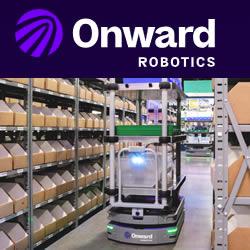The Next Big Thing in Robotics: Cleaning
Cleaning robotics were already on the rise pre-COVID. Now, sanitation has become a top priority for businesses and health organizations around the world. At the same time, many companies are dealing with a shortage of sanitation workers. As a result, they're looking to new solutions that will help manage the increased workload.
Cleaning robots, outfitted with tools like UV light cleaners, have taken the spotlight as one way of automating cleaning processes in the age of COVID. For organizations trying to improve COVID-era sanitation standards, these robots have become an extremely valuable asset. They're also likely to have a lasting impact once the pandemic is over.
This is how cleaning robots have become the next big thing for robotics manufacturers.
Autonomous Robots Help Hospitals Fight COVID-19
Hospital cleaning robots aren't new. Some models of autonomous medical robots have patrolled hospital halls since at least 2015. Hospitals use these robots to deliver food, drugs and clean linens to nurses, and also to cart away waste.
However, most hospitals haven't felt the need to adopt totally autonomous solutions until recently. COVID made the benefits that cleaning robots can provide more obvious.
UV cleaners, for example, can denature proteins and DNA in bacteria and viruses, making them very effective hospital cleaners. Unfortunately, UV light cleaners, while powerful enough to sanitize hospital rooms and hallways, aren't always effective when operated by humans. Human workers can miss areas of a room or underexpose them, leaving bacteria and viruses behind. UV cleaners are also most effective at strengths that can be harmful to human operators.
Autonomous UV cleaning robots solve these problems. Like most autonomous robots, these cleaning bots use cameras and sensors to map the area they're in, and then navigate using a combination of their digital mapping and preprogrammed waypoints.
In most cases, these robots don't replace sanitation crews. Instead, they provide an additional round of cleaning — a valuable line of defense against COVID. Because these robots are totally autonomous, they don't add any extra work to the schedules of already-stressed service workers.
Cleaning robots are also available 24/7, won't get tired and don't need PPE while they're on the clock. This makes them a valuable alternative to calling in sanitation workers or asking that staff work longer shifts.
The healthcare field — along with the community the field serves — is dealing with a lot of uncertainty right now. Many Americans have lost health insurance, it's not clear how long the COVID crisis will last and the fate of the ACA remains unclear pending a challenge to the law in the Supreme Court. Cleaning robots can provide a bit of reassurance to patients and offer a sign that hospitals are taking sanitation extremely seriously.
Businesses and Non-Profits Adopt Cleaning Robots
Businesses and non-profits also want to boost their sanitation practices to reassure customers and prevent the spread of disease. Big national chains, like Walmart and Kroger, were using robots before the pandemic. Now, many other businesses are following their lead.
Cleaning robots can clean entire areas of the store by themselves, leaving essential staff to focus on more important work. Many of these robots use brushes, mops and electrostatic sprayers, which mist chemical cleaners over a large area. Some businesses are also taking a note from hospitals and adopting UV light cleaners.
These systems, like those used in hospitals, are mostly autonomous and navigate using a combination of visual data and pre-programmed routes. These systems are very flexible, meaning routes can be pre-programmed easily as needed. This makes operating the cleaning robots much simpler for an organization like a food bank.
The areas of a food bank warehouse that need to be disinfected may change daily. With one of these robots, it's possible for warehouse staff to quickly swap out an old route for a new one, ensuring the right areas of the warehouse get sanitized.
The Pandemic May Drive Broader Adoption of Cleaning Robotics
Cleaning robots aren't just limited to environments that need intense sanitation. Home cleaning robot companies have also seen big sales boosts following pandemics. Executives from one of these companies attributed the demand uptick to people working from home. Spending more time at home may mean people are putting more effort into keeping their houses clean. Or, as schools and childcare facilities reopen, people are finding themselves with less time to spend on cleaning the home.
If the trend towards working from home sticks around — which many experts believe is a real possibility — these home cleaning robots could remain popular well into the future.
Similarly, if businesses and hospitals find that cleaning robots boost visitor confidence and make sanitation more effective these robots may become permanent additions.
How Cleaning Robots Became Essential
While cleaning robots are nothing new, it seems likely that the novel coronavirus is going to make them more important than ever before. Hospitals, businesses and individuals who adopt these robots will at least be aware that they are a post-pandemic option. They may also decide to keep the machines if they prove to be more efficient than human workers alone.
It's not clear right now if the pivot towards cleaning robots will have a long-lasting impact. Experts believe, however, that changing consumer habits are likely to stick around — new business practices may too.
Comments (0)
This post does not have any comments. Be the first to leave a comment below.
Featured Product

